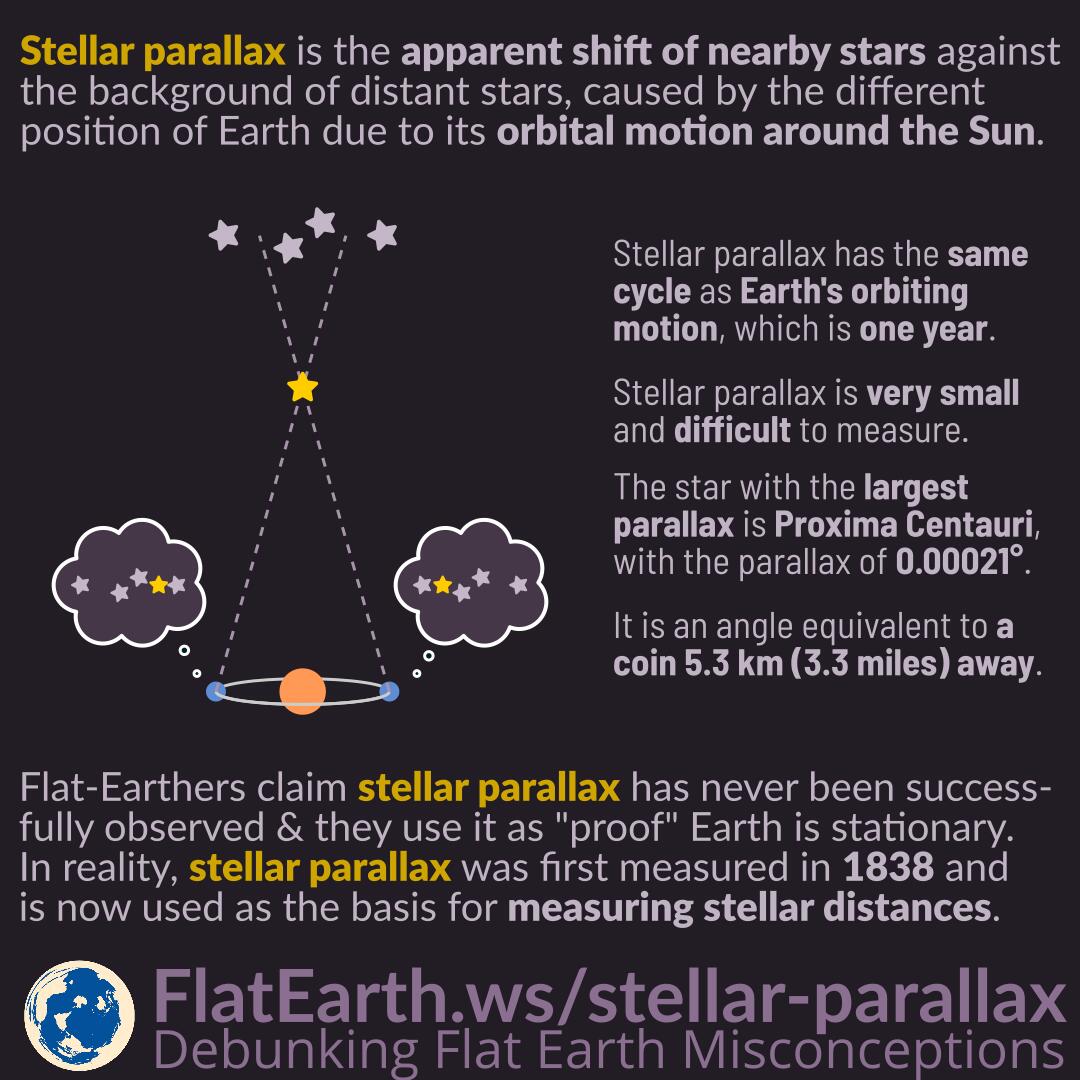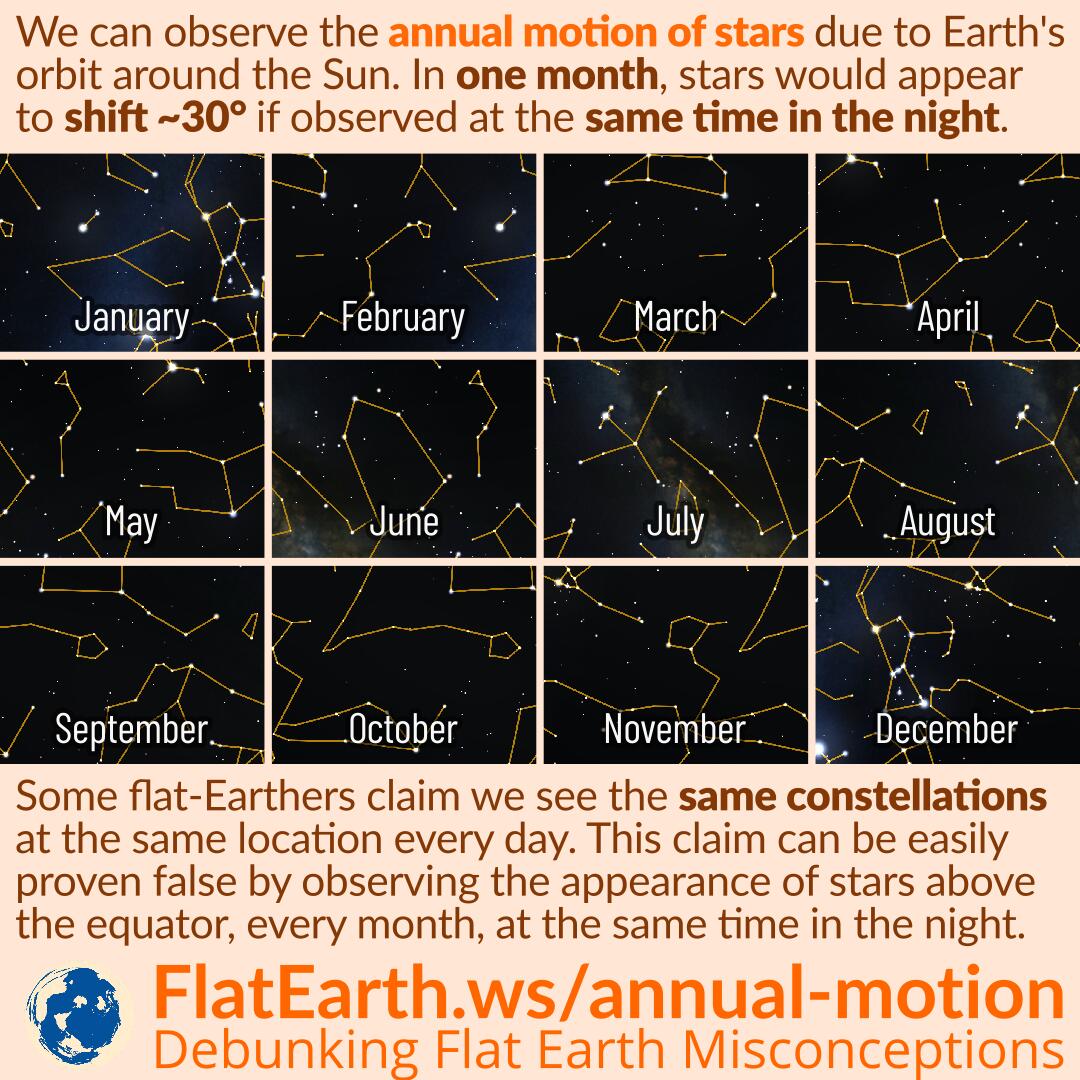Stellar aberration is the apparent shift of stars about their actual positions, depending on the direction Earth is moving in its orbit around the sun. It occurs because the speed of light is finite; it takes time for light to reach the observer.
Stellar aberration was discovered in 1727 by James Bradley. It was the first direct proof of heliocentrism, that Earth is in orbit around the sun.




